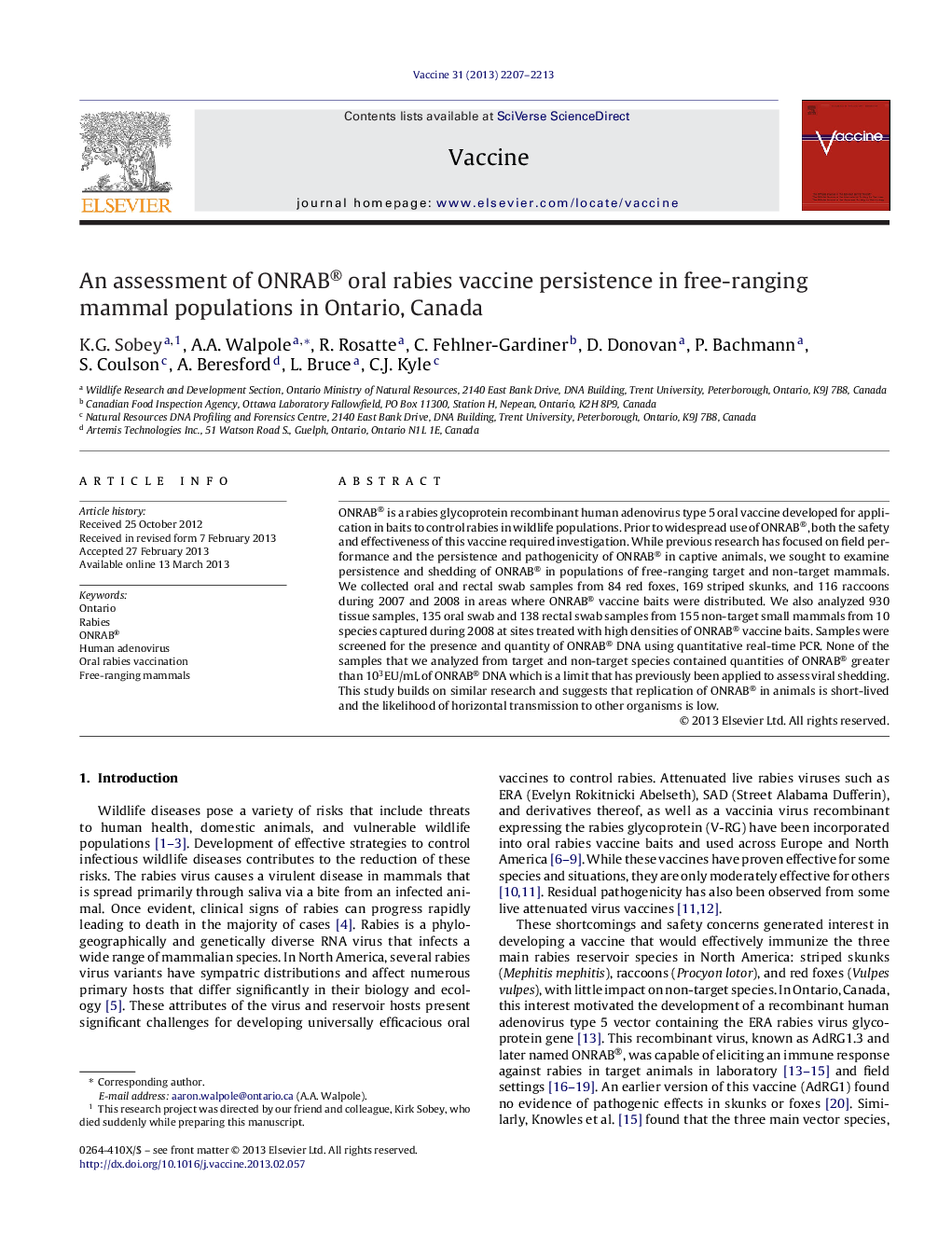| Article ID | Journal | Published Year | Pages | File Type |
|---|---|---|---|---|
| 2402702 | Vaccine | 2013 | 7 Pages |
•ONRAB is a recombinant human adenovirus vaccine developed to control sylvatic rabies.•The safety and effectiveness of ONRAB requires further investigation prior to widespread use.•We studied persistence and shedding of ONRAB in wild mammals with quantitative PCR.•No samples contained amounts of ONRAB DNA that exceeded the quantification limit.•Our results suggest a short replication period of ONRAB and a low risk of spread.
ONRAB® is a rabies glycoprotein recombinant human adenovirus type 5 oral vaccine developed for application in baits to control rabies in wildlife populations. Prior to widespread use of ONRAB®, both the safety and effectiveness of this vaccine required investigation. While previous research has focused on field performance and the persistence and pathogenicity of ONRAB® in captive animals, we sought to examine persistence and shedding of ONRAB® in populations of free-ranging target and non-target mammals. We collected oral and rectal swab samples from 84 red foxes, 169 striped skunks, and 116 raccoons during 2007 and 2008 in areas where ONRAB® vaccine baits were distributed. We also analyzed 930 tissue samples, 135 oral swab and 138 rectal swab samples from 155 non-target small mammals from 10 species captured during 2008 at sites treated with high densities of ONRAB® vaccine baits. Samples were screened for the presence and quantity of ONRAB® DNA using quantitative real-time PCR. None of the samples that we analyzed from target and non-target species contained quantities of ONRAB® greater than 103EU/mL of ONRAB® DNA which is a limit that has previously been applied to assess viral shedding. This study builds on similar research and suggests that replication of ONRAB® in animals is short-lived and the likelihood of horizontal transmission to other organisms is low.
